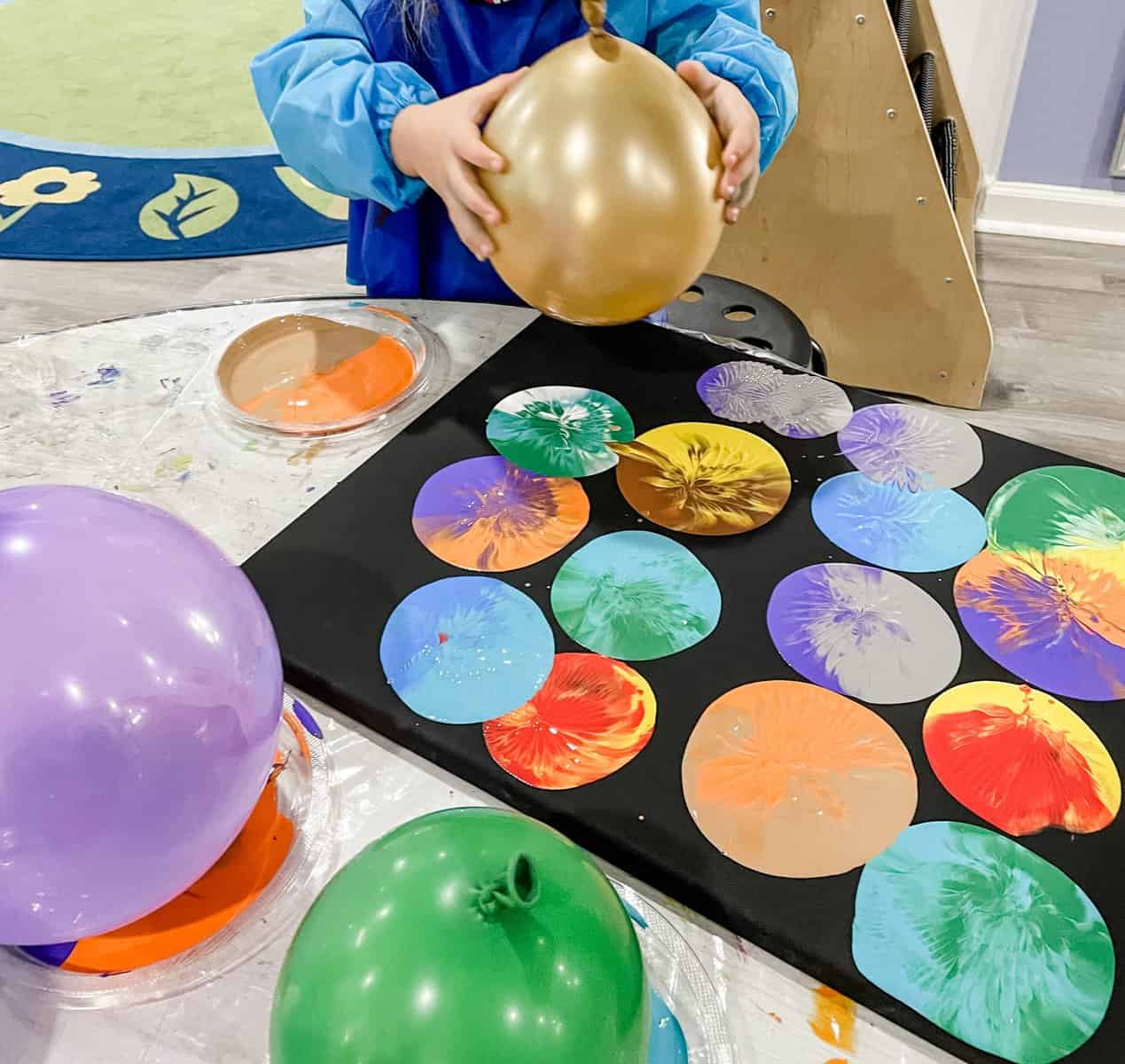The Colorful Canvas: Painting in Preschool for Development and Fun
Welcome to the vibrant world of preschool painting, dear parents! If you’re looking to add a splash of creativity and developmental benefits to your little ones’ lives, you’ve come to the right place. Painting isn’t just about getting messy with colors; it’s a wonderful way to foster your child’s growth in so many ways. So grab your paintbrushes (and maybe a little bit of patience), and let’s embark on this colorful adventure together!
The Benefits of Painting in Early Childhood Development
Before we dive into the fun stuff, let’s take a moment to appreciate the incredible benefits that painting can bring to preschoolers:
- Motor Skill Development: Gripping a paintbrush helps improve fine motor skills, which are crucial for writing and other daily tasks.
- Cognitive Growth: Choosing colors, planning a picture, and executing their ideas enhances critical thinking and problem-solving skills.
- Sensory Stimulation: The feel of the paint, the smell of the colors, and even the sound of a brushstroke on paper can provide rich sensory experiences.
- Creative Expression: Painting allows children to express their emotions and ideas in a visual format, fostering self-expression and confidence.
- Social Interaction: Group painting activities encourage teamwork, sharing, and communication among peers.
- Emotional Resilience: Creating art can be a soothing and therapeutic experience, helping little ones manage their feelings and frustrations.
Setting Up Your Preschool Painting Studio
Now that we’ve covered the why, let’s talk about the how. Setting up your preschooler’s painting space can be both fun and functional. Here’s what you’ll need to create your little artist’s studio at home:
- Space: Designate a specific area that’s okay to get a bit messy. Use a washable, water-resistant mat or an old tablecloth to protect the floor.
- Supplies: Water-based paints are perfect for little hands. Look for non-toxic, washable varieties for easy cleanup. Gather a variety of brushes, some sponges, and other creative tools.
- Surfaces: Stock up on paper of different sizes and textures. You can also use cardboard, wood, or even fabric for unique painting experiences.
- Cleanup: Keep a stash of wet wipes, old towels, or a basin of water nearby for quick cleanups. Remember to dress your child in old clothes or an apron.
- Display: Create a display area to showcase your preschooler’s masterpieces. This can be as simple as a string with clothespins or a dedicated bulletin board.
With the perfect painting setup at the ready, you’re all set to introduce your preschooler to the joy and learning that comes with this form of artistic expression.
Introducing Preschoolers to Painting: Tips for Success
Getting young children excited about painting might seem daunting, but with these tips, you can make the process enjoyable for both of you:
- Start Simple: Begin with basic projects that require just a few colors and broad, easy strokes to build confidence.
- Be Patient: Remember, the process is more important than the outcome. Encourage your child, regardless of how the artwork turns out.
- Ask Questions: Engage with your child about their artwork. Ask them to tell you a story about it or describe why they chose certain colors.
- Explore Techniques: Show them different ways to use paint, like stamping, finger painting, or mixing colors to see what new shades they can create.
- Ensure Safety: Always supervise painting sessions and ensure that all materials used are safe and suitable for your child’s age group.
As you encourage your preschooler to paint, watch as their imaginations take flight, their skills blossom, and their confidence skyrockets. Be sure to capture these moments, as they are fleeting but invaluable in shaping your child’s development.
Remember, dear parents, painting in preschool is less about creating a perfect picture and more about the experience and growth your child will gain. So, let the paint flow, the colors blend, and the creativity unfurl. Your little one’s preschool painting journey is just beginning, and the rewards will be both vibrant and vast. Happy painting, everyone! Stay tuned for more insights into making the most of your preschooler’s painting time.

5 Key Preparations for Preschool Painting
Now, let’s highlight five essential things you should know when preparing your little artist for the wonderful world of painting:
- Expect and Embrace Mess: It’s part of the process! Dress your child in old clothing and have a cleanup station ready. This way, you can let them explore without stress.
- Non-Toxic and Washable Materials: Safety first! Make sure the materials you purchase are labeled non-toxic and washable. This ensures that the paint is safe for your child’s skin and won’t leave permanent marks on clothes and surfaces.
- Age-Appropriate Tools: Offer tools that are the right size for little hands. Chunky brushes, foam dabbers, and even cotton balls can make great painting tools for preschoolers.
- Create a Routine: Consistency helps children feel secure. Having a routine around painting time can help them look forward to their creative activities. Maybe it’s after snack time or before their afternoon rest.
- Set Limits and Expectations: Children appreciate knowing the rules. Simple instructions like “we paint on paper, not on the wall,” help keep the activity focused and contained. It’s all about setting them up for success!
Encouraging a Healthy Relationship with Art
Nurturing a love for painting early on can lead to a lifelong appreciation for art. Here are a few ways to develop a healthy relationship with art for your little one:
- Display Their Artwork: Acknowledging their work by displaying it, sends a powerful message that you value their creativity.
- Visit Art Exhibitions: Exploring local art museums or galleries can spark inspiration and a deeper understanding of art.
- Read Books about Art: Introduce them to the world of art through children’s books that feature famous artists or art techniques.
- Use Positive Reinforcement: Praise the effort and the process, not just the final piece. This builds intrinsic motivation and self-esteem.
Turning Mistakes into Opportunities
Sometimes paintings don’t turn out as expected, and that’s okay! Transforming “mistakes” into teachable moments fosters resilience and problem-solving. Here’s how:
- Problem-Solving Discussions: Talk through what they might do differently next time. This encourages adaptability and critical thinking.
- It’s About Exploration: Reinforce that it’s okay to experiment and that not every artwork needs to be a masterpiece.
With these preparations and encouragements in place, painting in preschool becomes a joyful and developmental voyage that will color your child’s early years with imagination and growth. So, let your little one’s creativity soar and watch their unique palette of skills develop with every stroke of paint. It’s a journey you’ll both cherish in the colorful canvas of life!
See more great Things to Do with Kids in New Zealand here. For more information see here
Disclaimer
The articles available via our website provide general information only and we strongly urge readers to exercise caution and conduct their own thorough research and fact-checking. The information presented should not be taken as absolute truth, and, to the maximum extent permitted by law, we will not be held liable for any inaccuracies or errors in the content. It is essential for individuals to independently verify and validate the information before making any decisions or taking any actions based on the articles.




